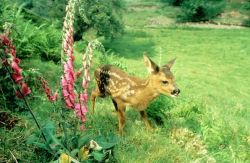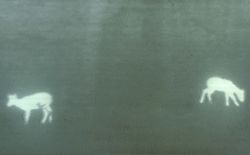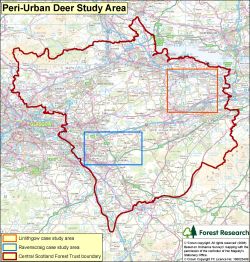Summary
What do townsfolk think about urban deer?

Summary
As towns and cities expand, public policy and projects (e.g. the Forestry Commission’s ‘Woodlands in and Around Towns’) are also increasing deer habitat. Interactions between people and deer are on the increase, but popular deer management methods are difficult to practice and less popular in urban communities. Forest Research engaged directly with local communities to document these interactions and discover people’s preferences for management strategies.

Photo by Jamie Cordery
Key findings
- Deer are not a prominent feature of most people’s everyday lives
- Residents like seeing deer – they provide a link to a ‘natural’ world
- People report very little negative impact from wild deer, but highlight how the peri-urban environment may affect the welfare of the deer
- Infrequent sightings and minimal negative interactions make community members question any general need for deer management – if reasons do exist they must be communicated clearly and effectively to all stakeholders
- When necessary, fencing and ‘scarers’ are widely perceived as the most preferred option by local communities, along with changing human activities (such as driving practices or urbanisation)
- Culling is viewed as a ‘last resort’ in response to serious impacts and deer overabundance
- Future efforts should consider frameworks for ‘managing people-deer interactions’ rather than ‘deer management’ per se
The research team developed a decision support system to help stakeholders develop this new mode of deer management for urban and peri-urban environments.
Publications
- Final report – The management of roe deer in peri-urban Scotland
Funders and partners
The project was funded by the Deer Commission Scotland through the Scottish Government.
Status
2007-2009

